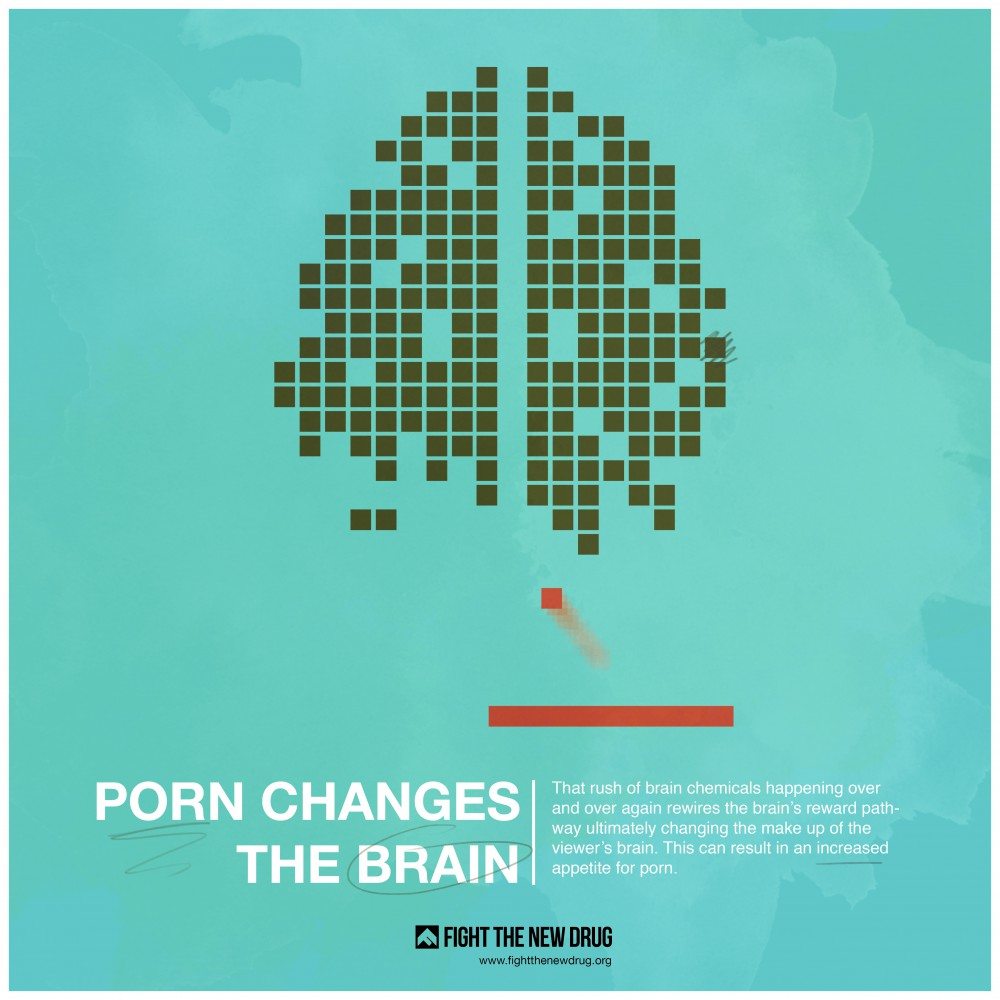For many people, watching porn is something they think they can separate from the rest of their life. It may seem like someone’s browser history and life in the real world can be totally isolated from each other, but that’s not exactly how it works. Our brain doesn’t exactly compartmentalize what we like to watch online with what we like in real interactions.
Believe it or not, studies show that those who consume pornography more frequently have brains that are less connected, less active, and even smaller in some areas. [1]
To be fair, the studies only show that there’s a correlation between porn consumption and smaller, less active brains, but they raise the question: Can porn literally change your brain?
The short answer: yes.
Scientists used to believe that once you finished childhood, your brain lost the ability to grow. [2] They thought that nothing except illness or injury could physically alter an adult brain. Now we know that the brain goes on changing throughout life, [3] constantly rewiring itself and laying down new nerve connections, and that this is particularly true in our youth. [4]
See, the brain is made up of about 100 billion special nerves called neurons, [5] that carry electrical signals back and forth between parts of the brain and out to the rest of the body. Imagine you’re learning to play an E chord on the guitar: your brain sends a signal to your hand telling it what to do. As that signal zips along from neuron to neuron, those activated nerve cells start to form connections because “neurons that fire together, wire together.” Those newly-connected neurons form what’s called a “neuronal pathway.” [6]
Think of a neuronal pathway like a trail in the woods. Every time someone uses the trail, it gets a little wider and more permanent. Similarly, every time a message travels down a neuronal pathway, the pathway gets stronger. [7] With enough repetitions, your neuronal pathway will get so strong you’ll be strumming that E chord without even thinking about it. That process of building better, faster neuronal pathways is how we learn any new skill, whether it’s memorizing math formulas or driving a car. Practice makes perfect.
Related: Cambridge Neuroscientists Find Striking Similarities in Brains of Porn and Drug Addicts
But there’s a catch. Your brain is a very hungry organ. It may only weigh 2% of your body weight, but it eats up 20% of your energy and oxygen, [8] so resources are scarce up there in your head. There’s some pretty fierce competition between brain pathways, and those that don’t get used enough will likely be replaced. [9] Use it or lose it, as they say. Only the strong survive.
That’s where porn comes in.
Porn happens to be fantastic at forming new, long-lasting pathways in the brain. In fact, porn is such a ferocious competitor that hardly any other activity can compete with it, including actual sex with a real partner. [10] That’s right, porn can actually overpower the brain’s natural ability to have real sex! Why? As Dr. Norman Doidge, a researcher at Columbia University, explains, porn creates the perfect conditions and triggers the release of the right chemicals to make lasting changes in the brain. [11]
Conditions
The ideal conditions for forming strong neuronal pathways are when you’re in what scientists call “flow.” Flow is “a deeply satisfying state of focused attention.” [12] When you’re in flow, you get so deep into what you’re doing that nothing else seems to matter. [13] You’ve probably experienced it before, playing a game or having a conversation with friends or reading a great book. You were so focused on what you were doing that you lost track of time, and everything around you disappeared. You wanted it to keep going forever. That’s flow.
When you’re in flow, it’s like you have superhuman abilities. Athletes call it being “in the zone,” when you seem to do everything right. Your focus is intense. Your memory is phenomenal. Years later, you’ll still recall exact words of the conversation or details of what you read.
Now imagine someone sitting in front of the computer at 3:00 in the morning, looking at porn. That person is so absorbed in his or her porn trance that nothing else can compete for the consumer’s attention, not even sleep. This person is in the ideal condition for forming neuronal pathways, and that’s what they are doing. Clicking from page to page in search of the perfect image, not realizing that every image seen is reinforcing the pathways the consumer is forging in his or her brain. By now, those images are burned so deeply into their mind that they will remember them for a long time to come, maybe the entirety of their life.
Chemicals
Like other addictive substances and behaviors, porn activates the part of the brain called the reward center, [14] triggering the release of a cocktail of chemicals that give you a temporary buzz. [15] (See How Porn Affects The Brain Like a Drug.) One of the chemicals in that cocktail is a protein called DeltaFosB. [16]
Remember when we said that building neuronal pathways is like making a trail in the woods? Well, DeltaFosB is like a troop of mountaineers out there with picks and shovels, working like beavers to groom the trail. With DeltaFosB floating around, the brain is primed to make strong mental connections between the porn being consumed by individuals and the pleasure they feel while consuming. [17] Basically, the DeltaFosB is saying, “This feels good. Let’s be sure to remember it so we can do it again.”
Related: How Porn Twisted My Sexuality
DeltaFosB is important for learning any kind of new skills, but it can also lead to addictive/compulsive behaviors, [18] especially in adolescents. [19] DeltaFosB is referred to as “the molecular switch for addiction,” [20] because if it builds up enough in the brain, it switches on genes that create long-term cravings, driving the user back for more. [21] And once it has been released, DeltaFosB sticks around in the brain for weeks or months, which is why porn consumers may feel strong cravings for porn long after they’ve stopped the habit. [22]
The Good News
The good news is, neuroplasticity works both ways. If porn pathways aren’t reinforced, they’ll eventually disappear, so the same brain mechanisms that lay down pathways for porn can replace them with something else. [23] If the time has come for you or someone you love to begin that healing process, learn more about how to get help.
Bottom line:
Porn can alter the brain and desensitize it to be okay with unhealthy behaviors. Unlike real, meaningful relationships, porn never satisfies; it only increases the appetite for more porn. Bottom line—watching porn isn’t a harmless activity. It has the potential to lead a viewer down a path they never intended to go. It’s just not worth it.

Get Involved
This information needs to be spread across the globe. SHARE this article and get the word out that porn is anything but harmless entertainment.
